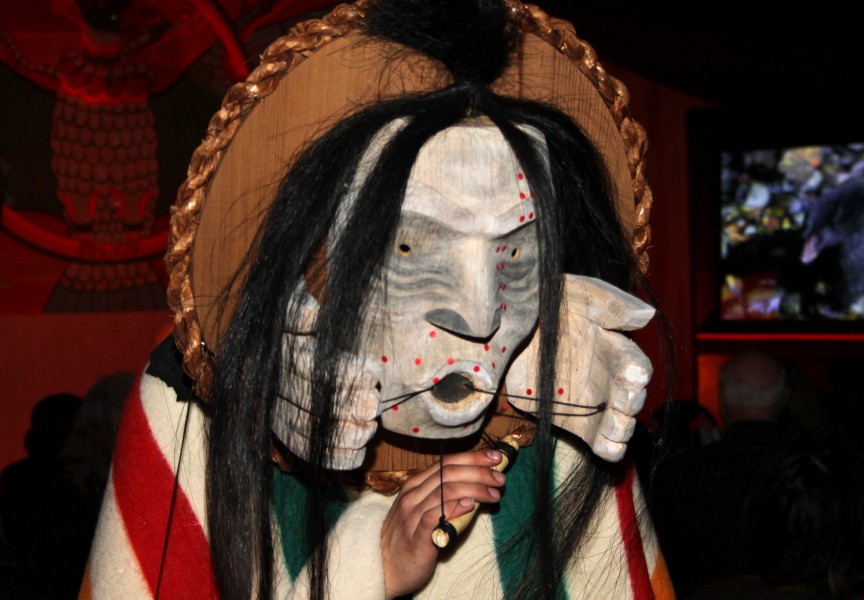The past few decades have seen B.C. First Nations make great strides in taking back control of their health care, and Jeanette Watts has been at the forefront of that transition.
Watts has retired after 25 years’ service with the Nuu-chah-nulth Tribal Council, most lately as Manager of Nursing.
When she arrived in 1988, the Tribal Council was just making the transition to receive direct funding for health care services, and the landscape since then has changed significantly.
“The Tribal Council has been a great place to have a nursing career,” Watts said. “It’s been such a great opportunity to be part of the return of decision-making to Nuu-chah-nulth people.”
Today, the NTC maintains a robust community health program that places an emphasis on “culturally-safe” care, and has welcomed a growing number of aboriginal nurses. That is a critical change, Watts said.
“I remember being on my dad’s reserve when the visiting nurse would come. Everybody was kind of scared and they would all look down. She wasn’t very friendly. We’ve been able to change that, to where the nurses are partners with the community.”
Watts credits her dad, Leslie Wayne Adolph-Swimme, a member of Xaxl’ip First Nation, with directing her nursing career towards B.C.’s aboriginal communities.
“My dad went to the residential school. His mother, my grandmother, was the first generation to go to the residential school. He was raised by his grandparents, who didn’t.”
His grandfather was the iconic Xaxl’ip Chief Thomas Adolph who, on May 10, 1911, signed the landmark Declaration of the Lillooet Tribes, which asserted their solidarity with the newly formed Indian Rights Association. He subsequently travelled to Ottawa in 1916 to express grievances over land rights as the railways expanded unchecked in the Lillooet traditional territories.
Watt’s father served in the U.S. military, then completed university in Seattle, where Jeanette was born. The family lived on both sides of the border over the years, and Watts earned her RN at the University of Oregon School of Nursing.
At her father’s urging, Watts began a Master’s degree in nursing at the University of British Columbia, but after one term, fate (with an assist from dad) intervened.
“While we were there, they said, ‘You’re a nurse? We need a nurse up in Telegraph Creek.’”
It proved to be a crash course in crisis management, emergency medicine and wrestling with an outdated model of nursing on First Nations reserves. After two years, Watts moved to Victoria to work as a special project nurse with Health Canada’s Medical Services Branch.
“That’s when I got connected with Nuu-chah-nulth. I used to fill in doing immunizations because of the lack of nurses.”
It was a lot of driving on back roads to remote communities like Ditidaht and Bamfield, giving a few shots and turning right around and going home. There wasn’t much chance to socialize, but Watts had made a good impression, and when she later completed her Master’s degree at the University of Hawaii School of Public Health in 1982, she was recruited to become Health Coordinator for the NTC.
“They actually recruited me in Hawaii. Julia Lucas was there for a conference. It was a great opportunity.”
In 1984, she married Tseshaht member Gary Watts, and after taking some time off, worked in a number of roles in the Alberni Valley, including as a community health nurse in the general population.
In 1988, she rejoined the NTC as Program Development Coordinator, later becoming Nursing Coordinator.
Watts said it is important to understand the critical role played by Community Health Representatives (CHR) in developing health services tailored to the individual communities. These care providers work on the front lines and maintain the local knowledge base that the entire system relies on.
As part of the NTC Nursing Framework, much of the emphasis has been on developing a culturally safe code of practice. The term was coined by Maori health professionals in New Zealand and the concept has blossomed in nursing literature, Watts said.
“It’s not so much about being culturally sensitive or culturally aware. It’s a step beyond those.”
More specifically, it’s about understanding the impact that your own personal and cultural background (and the power your position may represent) might have on another person – one who may be from an entirely different background.
“What we promote in our Nuu-chah-nulth Nursing Framework is the partnership, and listening to the voices of the people.
“The Nuu-chah-nulth elders say that the wisdom is within. So we try to treat each person as if they have the answer within. We help them navigate their way, rather than just tell them what to do.”
Over the years, one of the big challenges has been to deliver services to people living off-reserve.
To help fill that need, the NTC created an outreach program at the Bread of Life Centre, a soup kitchen in Port Alberni. The program was so successful that the Bread of Life Society raised money to build a clinic at the Third Avenue facility.
“VIHA (Vancouver Island Health Authority) saw how valuable that site was and wanted to build up that program. We were partners in putting that together. It’s now called HOP – the Health Outreach Program.”
The Health Authority was also impressed with an NTC maternal/children’s health program known as Mother’s Story, which was developed in collaboration with the entire NTC nursing team, right through to those all-important CHRs.
“Now, VIHA has announced that they are adopting the model for all of Vancouver Island, and they are going to keep that recognition that this is from Nuu-chah-nulth.”
Watts said she has no specific plans for her retirement, other than “Do whatever we want, whenever we want.” While she does intend to spend some time with her mom, Jeanne, who still lives in Seattle, she and Gary have no intention of relocating.
“We built a house on [Tseshaht] reserve and that’s our house for life.”






